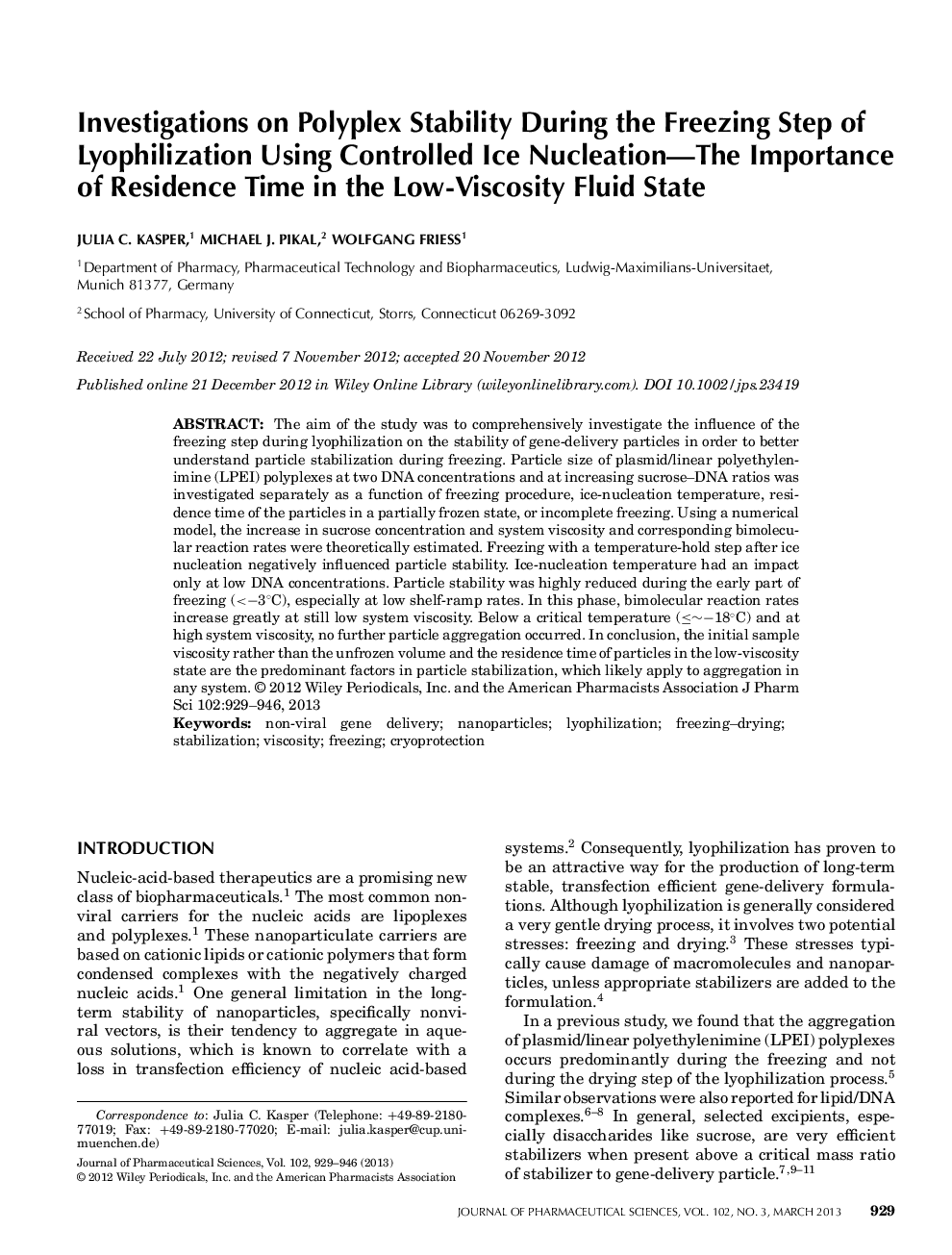| Article ID | Journal | Published Year | Pages | File Type |
|---|---|---|---|---|
| 10162738 | Journal of Pharmaceutical Sciences | 2013 | 18 Pages |
Abstract
The aim of the study was to comprehensively investigate the influence of the freezing step during lyophilization on the stability of gene-delivery particles in order to better understand particle stabilization during freezing. Particle size of plasmid/linear polyethylenimine (LPEI) polyplexes at two DNA concentrations and at increasing sucrose-DNA ratios was investigated separately as a function of freezing procedure, ice-nucleation temperature, residence time of the particles in a partially frozen state, or incomplete freezing. Using a numerical model, the increase in sucrose concentration and system viscosity and corresponding bimolecular reaction rates were theoretically estimated. Freezing with a temperature-hold step after ice nucleation negatively influenced particle stability. Ice-nucleation temperature had an impact only at low DNA concentrations. Particle stability was highly reduced during the early part of freezing (<â3°C), especially at low shelf-ramp rates. In this phase, bimolecular reaction rates increase greatly at still low system viscosity. Below a critical temperature (â¤~â 18°C) and at high system viscosity, no further particle aggregation occurred. In conclusion, the initial sample viscosity rather than the unfrozen volume and the residence time of particles in the low-viscosity state are the predominant factors in particle stabilization, which likely apply to aggregation in any system. © 2012 Wiley Periodicals, Inc. and the American Pharmacists Association J Pharm Sci 102:929-946, 2013
Keywords
Related Topics
Health Sciences
Pharmacology, Toxicology and Pharmaceutical Science
Drug Discovery
Authors
Julia C. Kasper, Michael J. Pikal, Wolfgang Friess,
